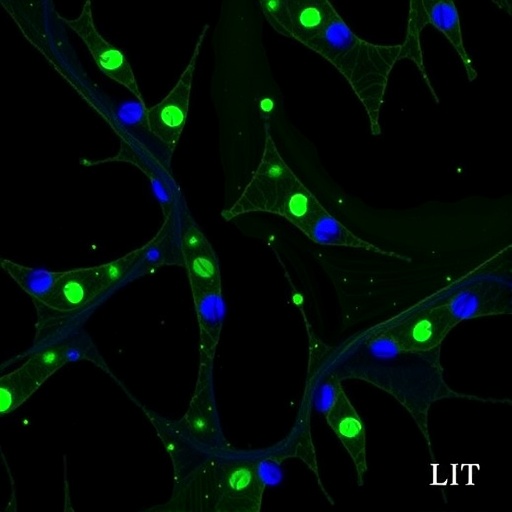The Zika virus strain circulating in Brazil was shown to be able to infect and cause damage to mice fetuses. In stem cell cultures of the human nervous system, the virus infection resulted in the cell death. Compared to the virus circulating in Africa, the Brazilian version appears more lethal to cells that later in development would give rise to the variety that makes up the brain.
The results will be published in the online edition of the journal Nature on Wednesday, in the article "The Brazilian Zika virus causes birth defects in experimental models", which reports experiments led by researchers from USP. In mice, the virus was able to cross the placenta of infected fetuses, restrict their overall growth, and cause the death of cells that form the brain of mice. The evidence supports the link between the infection by the Brazilian virus Zika in pregnant women, and congenital malformations such as microcephaly. This is the first animal model for the study of the Zika virus circulating in Brazil.
In vitro experiments demonstrate the effects of infection by the Brazilian and African Zika, and compares the damage of one and the other on three different types of human nervous system cell culture, including the so-called "minibrains". These lab-grown structures simulate the stage of development of human fetuses in the first trimester of pregnancy.
In minibrains, African virus and virus circulating in Brazil caused the death of nerve cells; after four days of infection, the Brazilian virus caused more extensive cell death and almost extinguished the proliferating cells, indicating that the viral strain present in Brazil – originated in Asia – has different behavior from the African lineage.
###
The Brazilian Zika virus strain causes birth defects in experimental models Fernanda R. Cugola1, ¶, Isabella R. Fernandes1, 2, ¶, Fabiele B. Russo1, 3, ¶, Beatriz C. Freitas2, João L.M. Dias1, Katia P. Guimarães1, Cecília Benazzato1, Nathalia Almeida1, Graciela C. Pignatari1, 3, Sarah Romero2, Carolina M. Polonio4, Isabela Cunha4, Carla L. Freitas4, Wesley N. Brandão4, Cristiano Rossato4, David G. Andrade4, Daniele de P. Faria5, Alexandre T. Garcez5, Carlos A.. Buchpigel5, Carla T. Braconi6, Erica Mendes6, Amadou A. Sall7, Paolo M. de A. Zanotto6, Jean Pierre S. Peron4, *, Alysson R. Muotri2, *, Patricia C. B. BeltrãoBraga1, 8, *
1- University of São Paulo, Department of Surgery, Stem Cell Laboratory, São Paulo, São Paulo, 05508-270, Brazil.
2- University of California San Diego, School of Medicine, Department of Pediatrics/Rady Children's Hospital San Diego, Department of Cellular & Molecular Medicine, Stem Cell Program, La Jolla, CA 92037-0695, USA.
3- Tismoo, The Biotech Company, São Paulo, SP, 01401-000, Brazil.
4- University of São Paulo, Department of Immunology, Neuroimmune Interactions Laboratory, São Paulo, SP, 05508-000, Brazil.
5- University of São Paulo, Department of Radiology and Oncology, USP School of Medicine, São Paulo, SP, 05403-010, Brazil.
6- University of São Paulo, Department of Microbiology, Institute of Microbiology Sciences, Laboratory of Molecular Evolution and Bioinformatics, São Paulo, SP, 05508-000, Brazil.
7- Institute Pasteur in Dakar, Dakar 220, Sénégal.
8- School of Arts Sciences and Humanities, Department of Obstetrics, São Paulo, SP, 03828000, Brazil.
¶These authors contributed equally to this work.
*To whom correspondence should be addressed: Dr. Beltrão-Braga, Av, Prof. Dr. Orlando Marques de Paiva, 87. Cidade Universitária. CEP: 05508-270. São Paulo, SP. Brazil. Email: [email protected] Phone: +55 (11) 3091-1312. Dr. Muotri, 2880 Torrey Pines Scenic Drive, La Jolla, CA 92037. MC0695, E-mail: [email protected], Phone: +1 (858) 5349320. Dr. Jean Pierre S. Peron, Av. Prof. Dr. Lineu Prestes, 1730, Cidade Universitária. CEP: 05508-270. São Paulo, SP. Brazil. E-mail: [email protected], Phone: +55 (11) 30917430
Media Contact
USP Scientific Outreach Unit
[email protected]
55-112-648-1423
@usponline
http://sites.usp.br/distrofia




